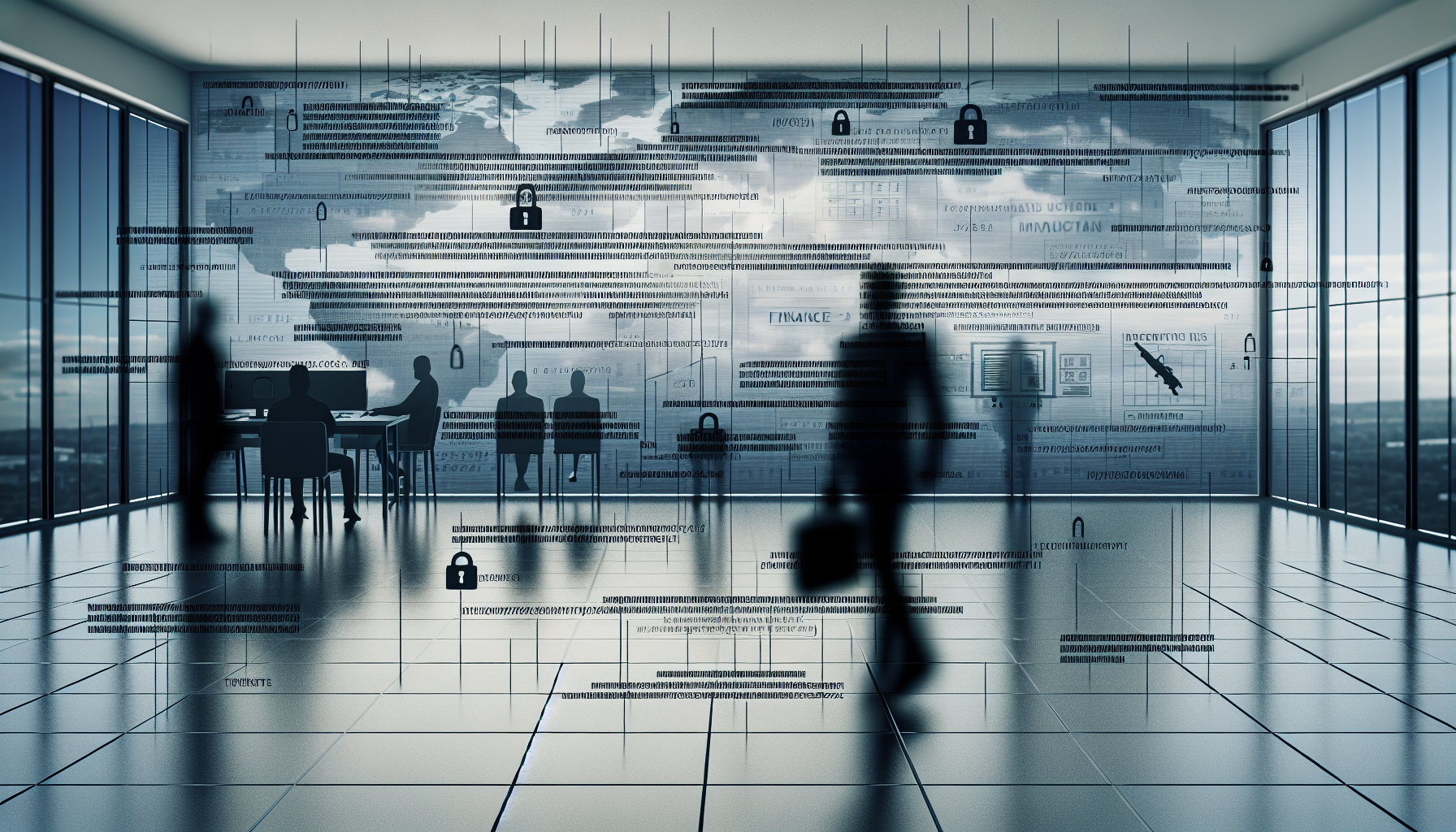Discover more from ESSGroup
Subscribe to get the latest posts sent to your email.

Threat Report: Botnets Continue to Target Aging D-Link Vulnerabilities
Published by AlienVault on 2024-12-31T16:26:24.317Z
A recent threat report published by AlienVault highlights the continued exploitation of long-standing vulnerabilities in D-Link routers by two botnets, FICORA and CAPSAICIN. These botnets have been spreading globally, targeting various Linux architectures and incorporating DDoS attack functions.
FICORA, a Mirai variant, uses a shell script to download and execute malware on affected devices, while CAPSAICIN, likely based on the Keksec group’s botnets, also targets multiple Linux architectures and includes DDoS capabilities. Both botnets exploit weaknesses in the HNAP interface of affected D-Link devices, demonstrating the persistent threat posed by unpatched vulnerabilities.
The attackers use servers in the Netherlands and target countries worldwide, with CAPSAICIN focusing on East Asian countries. Regular device updates and comprehensive monitoring are crucial for mitigating these threats.
Techniques Exploited
The report highlights several techniques exploited by the botnets, including:
Tools and Infrastructure Used
The report also outlines the tools and infrastructure used by the botnets, including:
Recommendations
Based on the threat report, several recommendations can be made for improving cybersecurity posture:
Resources
The full threat report is available at the following link:
https://www.fortinet.com/blog/threat-research/botnets-continue-to-target-aging-d-link-vulnerabilities
Subscribe to get the latest posts sent to your email.
Lorem Ipsum is simply dummy text of the printing and typesetting
industry. Lorem Ipsum has been the industry's

Threat Report for Security Operation Center
Published by CyberHunter_NL on May 2, 2025
Threat Overview
The security landscape is constantly evolving, and new threats emerge regularly. One of the latest threats identified involves malicious Go modules that fetch destructive payloads using wget. This report provides an in-depth analysis of this threat, its potential impact, and recommendations for mitigation.
Short Description of the Threat
The threat involves the use of malicious Go modules that leverage the wget command to download and execute destructive payloads on targeted systems. This method allows attackers to bypass traditional security measures and deliver malware that can cause significant damage to infrastructure and data integrity.
Confidence Level and Reliability
The confidence level for this report is 100, indicating a high degree of certainty in the information provided. The reliability of the report is rated as A – Completely reliable, ensuring that the data is accurate and trustworthy.
Key Elements of the Report
The report includes 52 connected elements, providing a comprehensive view of the threat landscape. These elements cover various aspects of the attack, including indicators of compromise (IOCs), tactics, techniques, and procedures (TTPs), and mitigation strategies.
External References
For additional information, please refer to the following external references:
Detailed Analysis
The threat involves the use of Go modules, which are packages that contain code and other resources used in Go programming. Attackers have found a way to embed malicious code within these modules, allowing them to execute arbitrary commands on the target system.
The wget command is commonly used for downloading files from the internet. In this case, attackers use wget to download a destructive payload that can wipe out critical data or disrupt essential services. This method is particularly effective because it leverages legitimate tools and protocols, making it difficult to detect using traditional security measures.
Impact of the Threat
The impact of this threat can be severe, especially for organizations that rely on Go modules in their development processes. The destructive payloads can cause significant data loss, service disruptions, and financial damage. Additionally, the use of legitimate tools makes it challenging to identify and mitigate the threat effectively.
Recommendations for Mitigation
To protect against this threat, organizations should consider the following recommendations:
Conclusion
The threat posed by malicious Go modules fetching destructive payloads using wget is significant and requires immediate attention. By understanding the tactics, techniques, and procedures used by attackers, organizations can implement effective mitigation strategies to protect their systems and data. Regular monitoring, strict access controls, and employee training are essential components of a comprehensive security strategy.
For more detailed information, please refer to the external references provided in this report.

Threat Overview
The Security Operations Center (SOC) has recently identified a new threat report published by CyberHunter_NL on March 27, 2025. This report, titled CoffeeLoader: A Brew of Stealthy Techniques, provides detailed insights into the emerging cyber threats associated with CoffeeLoader. The report is highly reliable, with a confidence level of 100 and a reliability rating of A – Completely reliable.
CoffeeLoader represents a significant advancement in malicious software design, employing stealthy techniques that make it difficult to detect and mitigate. This threat report aims to provide an in-depth analysis of CoffeeLoader’s tactics, techniques, and procedures (TTPs), as well as recommendations for protecting against this sophisticated malware.
Threat Description
CoffeeLoader is a type of loader malware designed to deliver additional payloads onto compromised systems. Unlike traditional loaders, CoffeeLoader uses advanced obfuscation and evasion techniques, making it challenging for security tools to detect its presence. The malware leverages various stealthy methods, including code encryption, dynamic loading, and process injection, to avoid detection by antivirus software and other security measures.
The report highlights that CoffeeLoader often targets organizations in the finance, healthcare, and manufacturing sectors, where sensitive data and critical operations are at risk. The malware’s primary goal is to establish a persistent presence on the infected systems, allowing threat actors to exfiltrate valuable information or disrupt operational processes over an extended period.
Key Findings
Recommendations for Mitigation
Conclusion
The threat posed by CoffeeLoader is substantial, given its advanced stealthy techniques and persistent nature. Organizations must remain vigilant and proactive in their cybersecurity efforts to protect against this evolving threat. By implementing the recommended mitigation strategies and staying informed about the latest developments in cyber threats, businesses can enhance their security posture and safeguard their critical assets.
For additional information on CoffeeLoader and its stealthy techniques, refer to the following external references:
Please check the following page for additional information:
https://www.zscaler.com/blogs/security-research/coffeeloader-brew-stealthy-techniques

Threat Overview
A new infostealer called VIPKeyLogger has been observed with increased activity. It shares similarities with Snake Keylogger and is distributed through phishing campaigns. The malware is delivered as an archive or Microsoft 365 file attachment, which downloads and executes a .NET compiled file. HIPKeylogger utilizes steganography to hide obfuscated code within a bitmap image. It exfiltrates various data types including PC names, country names, clipboard data, screenshots, cookies, and browser history. The stolen information is sent via Telegram to Dynamic DuckDNS C2 servers. The attack chain involves multiple stages, from initial email lure to payload execution and data exfiltration.
Tactics, Techniques, and Procedures (TTPs)
The threat actor exfiltrates information via Dynamic DuckDNS C2 servers. The attack chain involves multiple stages from initial email lure to payload execution and data exfiltration.
Network Traffic Patterns
Attack Patterns
The use of real or fabricated credentials is part of the attack pattern used to create the illusion that they are valid employees using legitimate systems, allowing attackers to bypass security controls.
HIPKeylogger has also been deployed via Office documents as an attachment or embedded in malicious links. This method may not raise suspicions among users who regularly receive these types of attachments and links.
Malware Components
The use of Open-source code, making it easier for threat actors to adapt the tool to different attack situations
This allows them to rapidly respond the evolving nature of security controls. \\n HIPKeylogger contains malicious components designed to remain under suspicion for extended periods after deployment.
Exfiltration and Analysis
This allows attackers to obscure their IP addresses, further complicating detection efforts.
Recommendations
Based on the threat report, several recommendations can be made for improving cybersecurity posture:
Improve security training and awareness programs to educate employees and organizations on the tactics of malicious actors.
Implement strict access controls around sensitive systems.

Subscribe now to keep reading and get access to the full archive.